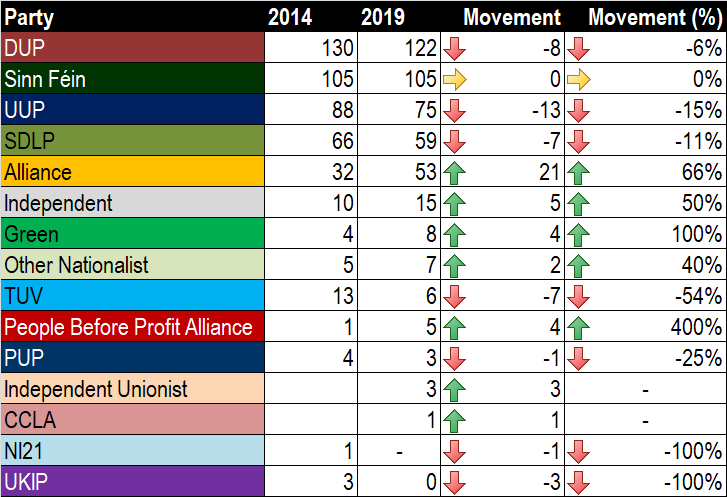With the counting now concluded in the 2019 Northern Ireland council elections, it is apparent that centrist parties have captured a significant number of seats from both nationalist and unionist parties. However, nationalist parties have captured enough seats from unionists to keep their total number of seats across the councils roughly the same, whilst the number of unionist councillors has dropped substantially. The number of seats won by each party/group in 2014 and 2019 is broken down in the table above.
I’ve created an interactive map showing the results in terms of first preference votes and seats captured. You can click on an individual District Electoral Area to look at DEA results individually, and you can toggle between 2014 and 2019 results to compare the two elections.
The following charts show movement of seats for each of the councils. Of course, in a multiple seat constituency it is not always possible to show seat movements if more than one seat changes hands, but few DEAs had more than one seat change party, and in these cases I have picked the seat movement that made the most sense (for example, staying within the unionist/nationalist/other bloc where possible).
I haven’t accounted for defections or other changes or party affiliation since the 2014 election. Differentiating between “Independents”, “Independent Unionists” and “Independent Nationalists” is somewhat of an inexact science, so I attempted to assign independents to each category based on, for instance, if the candidate was a member of a party in a previous election.
The UUP lost three seats in Antrim & Newtownabbey; two to Alliance and one to Sinn Féin. Alliance also gained a seat from the DUP to increase their representation from three to seven. The TUV lost both their councillors.
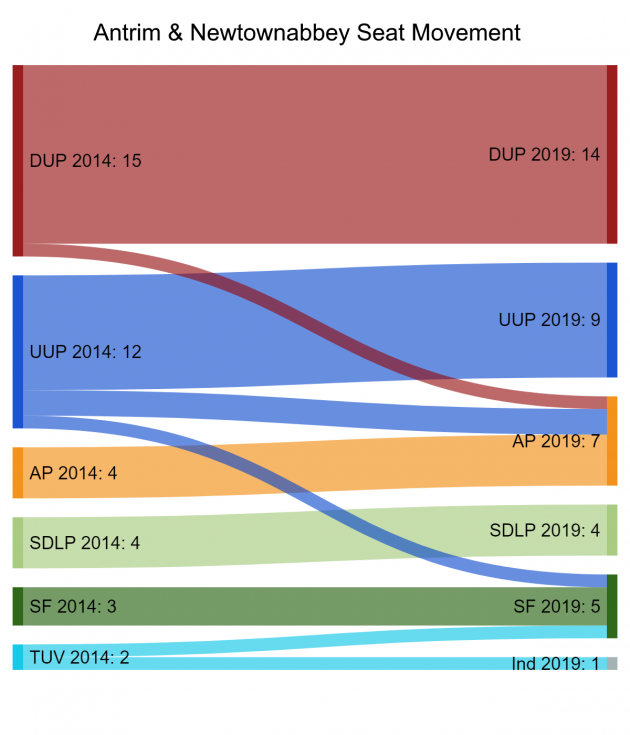
The DUP lost three seats in Armagh, Banbridge & Craigavon. The UUP vote held up reasonably well, only losing one of their councillors to Alliance. Alliance also captured a seat from the DUP and the SDLP to net three seats from no representation previously.
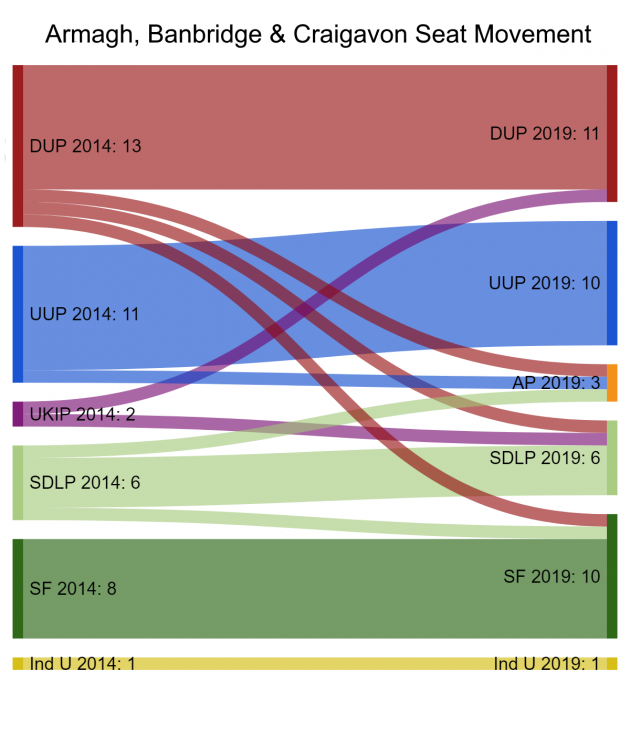
In Belfast, the UUP had a disastrous election, losing five of their seven seats from 2014, of which half were gained by the Green Party. The DUP gained one councillor each from the TUV and the UUP, and held all of the seats they were defending.
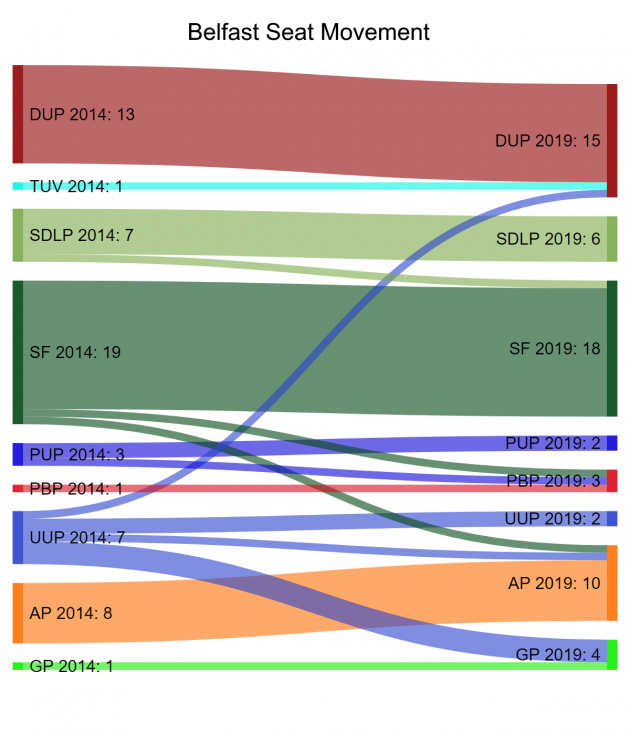
In Causeway Coast & Glens, the DUP gained one seat from the UUP and two from the TUV (who lost all of their seats from 2014) to increase to 14 from 11 in 2014. The UUP also lost a seat to both Alliance and Sinn Féin.
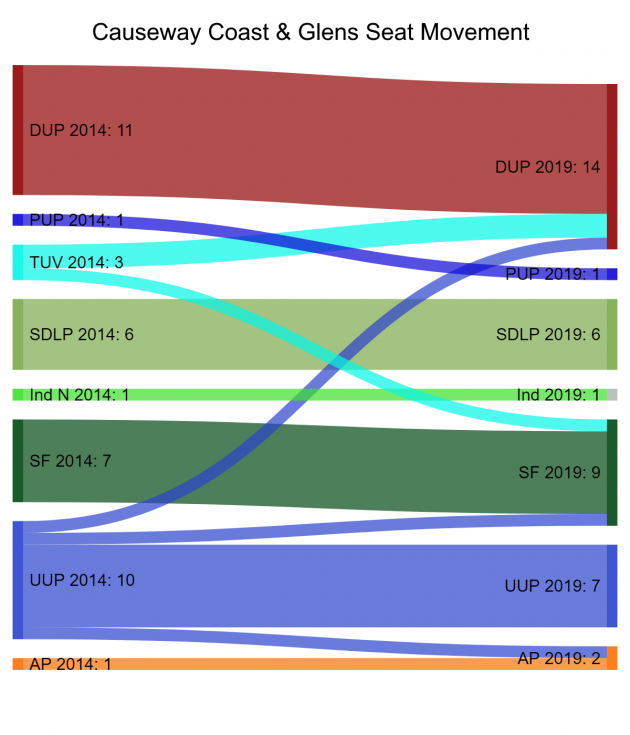
Sinn Féin had a poor result in Derry & Strabane, losing two councillors to both the SDLP and People Before Profit, and one to an independent. Alliance gained a seat from both the DUP and the SDLP.
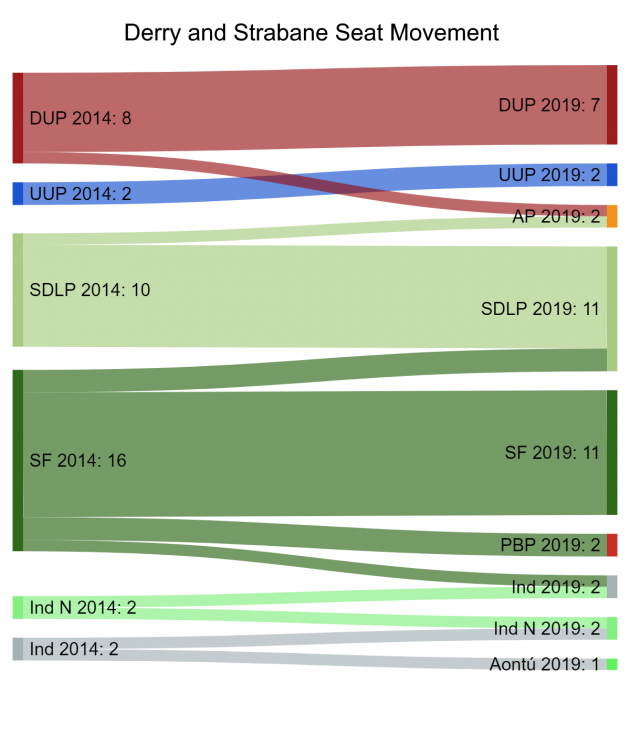
The SDLP lost three seats in Fermanagh & Omagh; one to Alliance and two to independents. Cross Community Labour Alternative gained their only seat of the election from Sinn Féin.
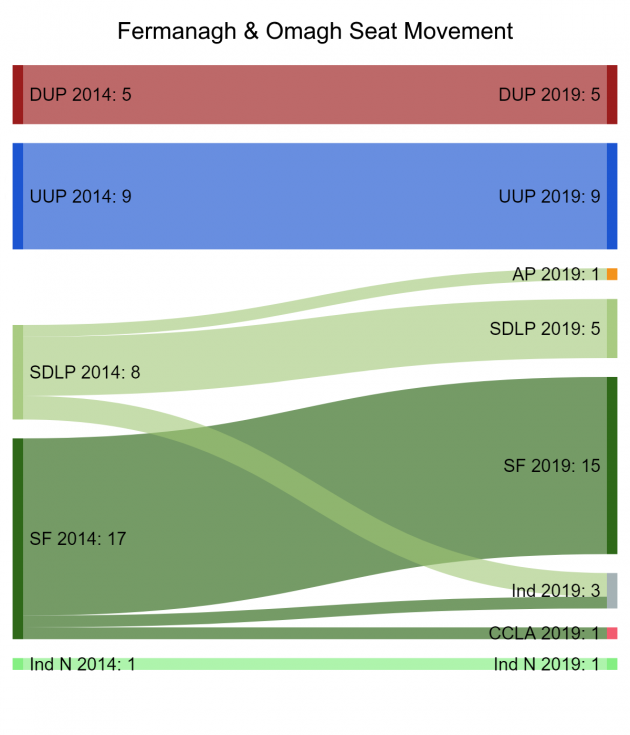
The UUP had their best results of the election in Lisburn & Castlereagh, gaining three from the DUP and successfully defending all eight seats won in 2014. As well as their losses to the UUP, the DUP also lost a seat to Sinn Féin and Alliance. Alliance also gained a seat from the TUV, to increase their total to nine. The SDLP “gained” a seat from NI21 (Johnny McCarthy was elected as a NI21 candidate but has since joined the SDLP). The Greens gained their first seat on the council.
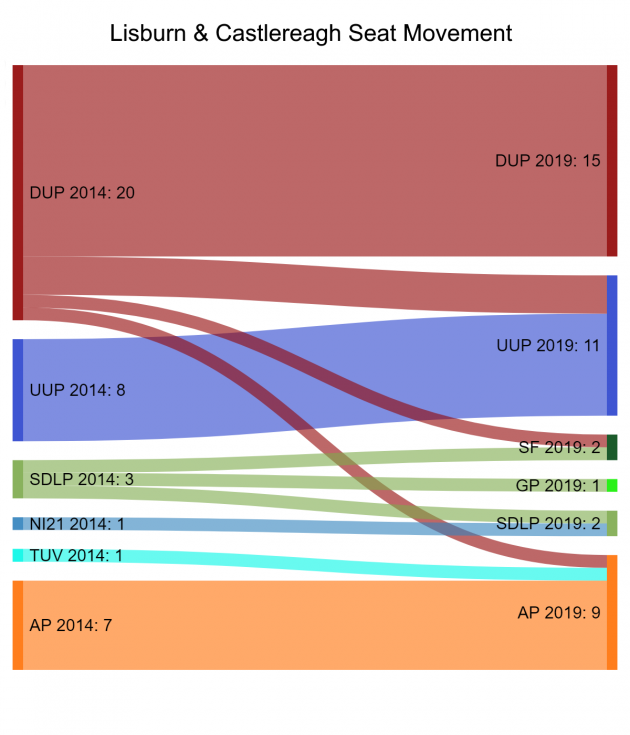
In Mid and East Antrim there were a substantial number of seats exchanged between the unionist parties. The TUV lost a seat to and gained a seat from the DUP, whilst the UUP gained a seat from UKIP to partially offset their losses to Alliance and independents. The Alliance Party gained four seats to increase their representation to seven.
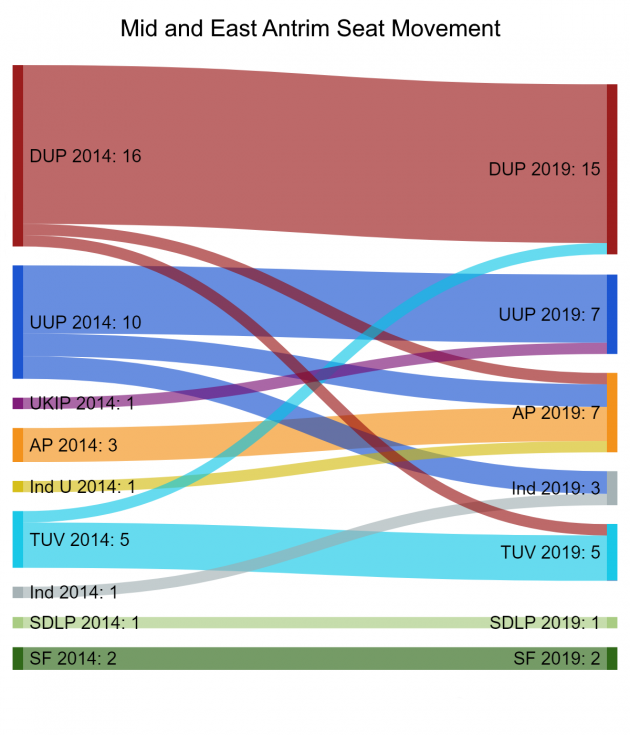
Mid Ulster was the council with the fewest seats moving between parties, with the UUP and Sinn Féin being the only party to lose a seat.
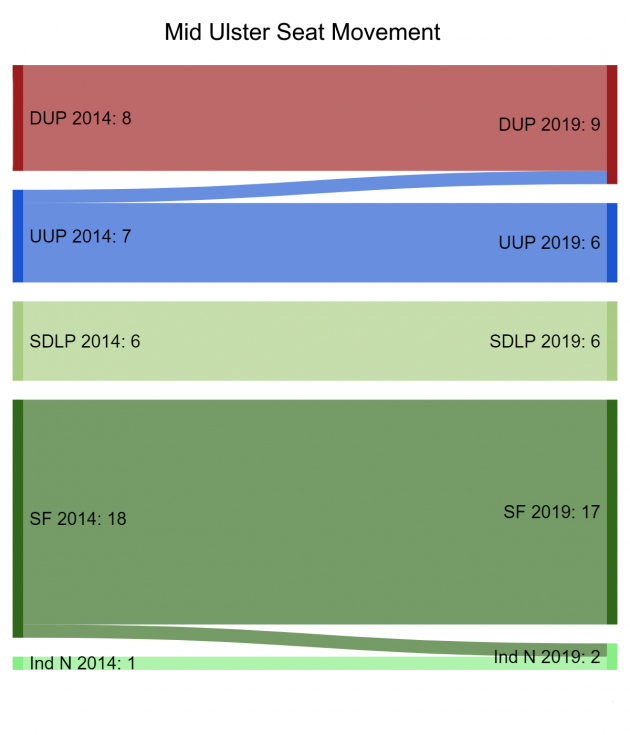
The SDLP lost three seats in Newry, Mourne and Down; two to Sinn Féin and one to an independent councillor. The UUP captured a seat from the DUP to increase their representation to four and are now the biggest unionist party on the council.
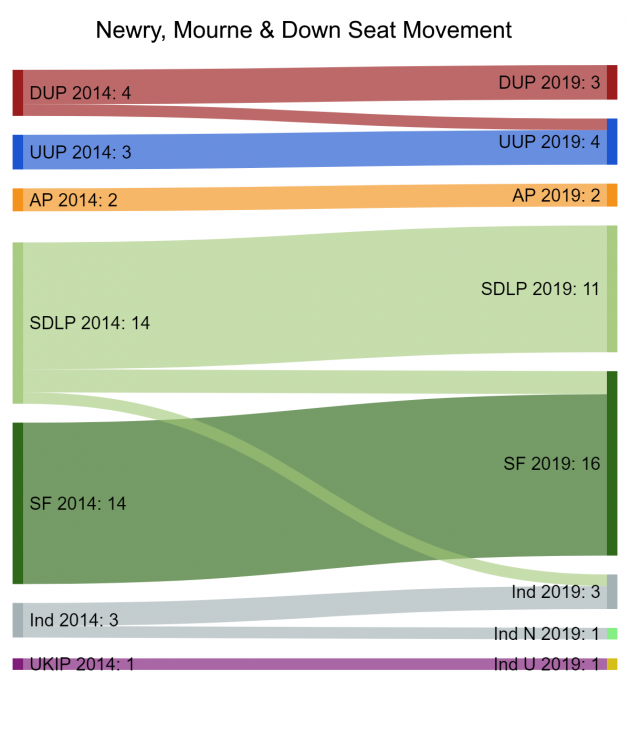
The Alliance Party gained two seats at the expense of the DUP and one from the UUP in North Down and Ards to increase their number of councillors to ten. The SDLP, TUV and Green Party held all of their seats from 2014.
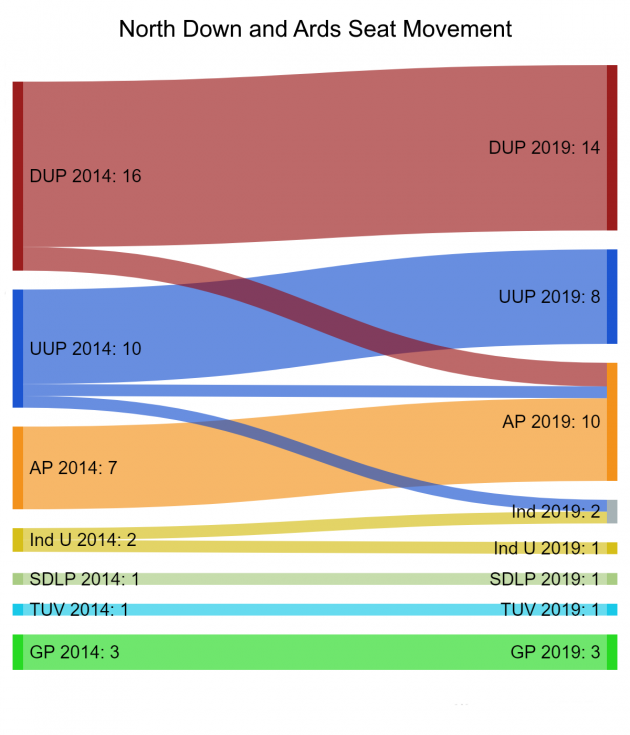
Looking at the election from the perspective of the size of the unionist/nationalist/other blocs, the number of unionist councillors has fallen substantially, from 246 (53% of all councillors) in 2014 to 209 (45%) today. There has been a substantial increase in the number of councillors who designate as neither unionist nor nationalist, whilst the numbers of nationalist councillors has fallen only slightly.
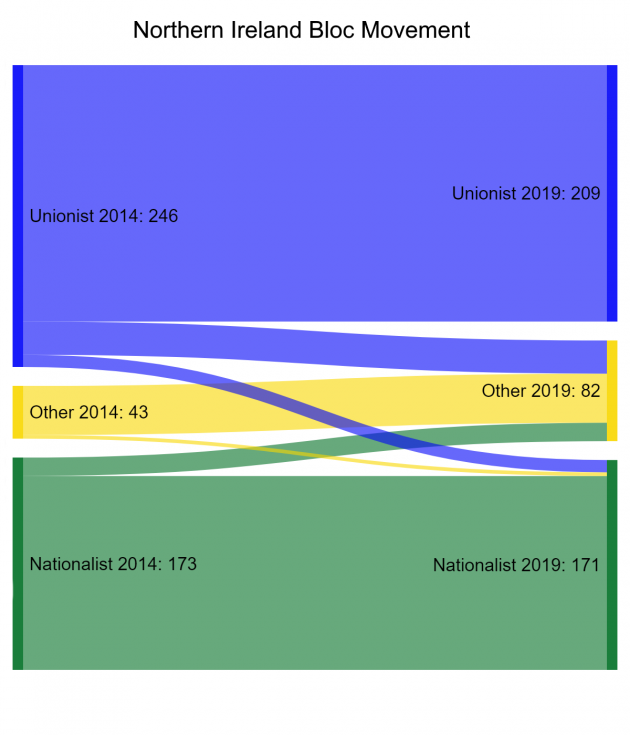
A qualified accountant and data analyst, interested in politics, economics and data. Twitter: @peterdonaghy
Discover more from Slugger O'Toole
Subscribe to get the latest posts to your email.
